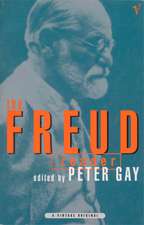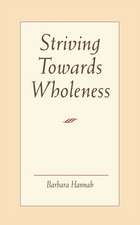The Red Book of C.G. Jung: A Journey into Unknown Depths: Red Book Jung
Autor Walter Boechaten Limba Engleză Paperback – 31 aug 2016
The Red Book is often mistakenly seen as a product of a midlife crisis of Jung's, caused by his break with Freud. However, although this crisis was present, the work is better understood as a manifestation of unconscious symbolism of Jung's individuation process that started in his childhood. Certain symbols of The Red Book can be traced back to Jung's earliest years, reaching their peak during the period of writing the book and continuing throughout his creative life.
Jung's work is therefore understood as having a Janus face: like the old Roman god of the gates it has two faces, one looking back to the past, the other looking to the future. If the past appears in the various figures with which Jung interacts throughout the book, such as the desert anchorite Ammonius, and the prophets and heroes of ancient times, it also looks to the future, pointing to new developments in analytical psychology and the practice of psychotherapy. Both aspects of the The Red Book are here discussed at length.
The writing of Jung's book and its appearance to the general public almost a century afterwards is studied in relation to the paradigm crisis in science and the phantasy of millenarianism. Jung wrote this work when Europe was entering the of World War One, which threw up profound cultural changes. Jung's family and estate gave their final authorization for the publication of the book in the year 2000, a year full of symbolic meaning, impregnated with phantasies of millenarianism. Jung's work is considered here as a book therefore pertaining to large cultural changes, one in the past and one in the present, and both equally transformative of society and the perception of man himself.
| Toate formatele și edițiile | Preț | Express |
|---|---|---|
| Paperback (1) | 203.13 lei 22-36 zile | +9.93 lei 5-11 zile |
| Taylor & Francis – 31 aug 2016 | 203.13 lei 22-36 zile | +9.93 lei 5-11 zile |
| Hardback (1) | 1032.96 lei 43-57 zile | |
| Taylor & Francis – 5 iul 2019 | 1032.96 lei 43-57 zile |
Preț: 203.13 lei
Preț vechi: 213.82 lei
-5% Nou
38.88€ • 42.25$ • 32.68£
Carte disponibilă
Livrare economică 31 martie-14 aprilie
Livrare express 14-20 martie pentru 19.92 lei
Specificații
ISBN-10: 1782204512
Pagini: 160
Dimensiuni: 152 x 229 x 17 mm
Greutate: 0.27 kg
Ediția:1
Editura: Taylor & Francis
Colecția Routledge
Seria Red Book Jung
Locul publicării:Oxford, United Kingdom
Public țintă
Professional Practice & DevelopmentCuprins
Descriere
Jung's The Red Book has an enormous complexity of meaning deriving from Jung's intimate experiences, which are still being discussed and elaborated on by the Jungian community all over the world. The present volume focuses on some of its main aspects and its importance for the understanding of the work of Jung.
The Red Book is often mistakenly seen as a product of a midlife crisis of Jung's, caused by his break with Freud. However, although this crisis was present, the work is better understood as a manifestation of unconscious symbolism of Jung's individuation process that started in his childhood. Certain symbols of The Red Book can be traced back to Jung's earliest years, reaching their peak during the period of writing the book and continuing throughout his creative life.
Jung's work is therefore understood as having a Janus face: like the old Roman god of the gates it has two faces, one looking back to the past, the other looking to the future. If the past appears in the various figures with which Jung interacts throughout the book, such as the desert anchorite Ammonius, and the prophets and heroes of ancient times, it also looks to the future, pointing to new developments in analytical psychology and the practice of psychotherapy. Both aspects of the The Red Book are here discussed at length.
The writing of Jung's book and its appearance to the general public almost a century afterwards is studied in relation to the paradigm crisis in science and the phantasy of millenarianism. Jung wrote this work when Europe was entering the of World War One, which threw up profound cultural changes. Jung's family and estate gave their final authorization for the publication of the book in the year 2000, a year full of symbolic meaning, impregnated with phantasies of millenarianism. Jung's work is considered here as a book therefore pertaining to large cultural changes, one in the past and one in the present, and both equally transformative of society and the perception of man himself.




























